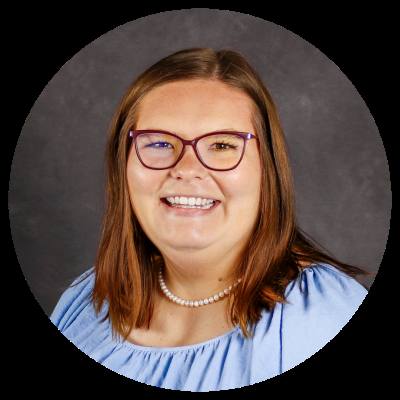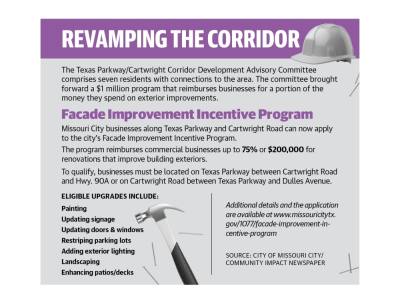“There were a lot of privately owned shops; there were businesses of all kinds and eateries ... that survived the area very well,” White said about the two roads, which intersect about a mile west of the Fort Bend Parkway Toll Road. “But as time went on and the economy started affecting everywhere, it definitely affected that area.”
Much of the economic and residential growth in the city has since shifted away from the older parts of the community and toward undeveloped areas along Hwy. 6 near the Fort Bend Parkway Toll Road.
“[The corridor] was the core of the city; that was where all the driving homes were; that was the place to be—and then it wasn’t,” said Aubrey Nettles, Missouri City’s economic development director.
Now, city leaders said they have developed strategic plans to encourage new growth along Hwy. 6, while also promoting revitalization along the Texas Parkway and Cartwright Road corridor.
“We want to balance [new growth] off with also a redevelopment focus and a revitalization plan that is really centered around the Texas Parkway and Cartwright [Road] corridor,” Council Member Jeffrey Boney said.
Revitalizing older areas
Boney said Missouri City was established as a bedroom community where residents could escape Houston. As a suburb, he said the city developed a lot of rooftops and green space but little in terms of amenities.
These amenities became more sought after as Missouri City grew with younger families coming into the city, he said.
“As we grew as a city, there were needs that people had,” Boney said. “In order to get those things and meet those needs, they had to travel outside of Missouri City.”
Boney said the lack of amenities drove residents out of the corridor and into neighboring communities or developing areas near Hwy. 6.
“[Texas Parkway and Cartwright Road] is a major thoroughfare when you first come into the city,” White said. “It just didn’t give a very good [look] or benefit to the community.”
Boney said the city has worked to create an economic development plan focused on attracting strategic industries and growth. However, the city was without an economic development director for about a year until Nettles was hired—slowing progress.
According to Nettles, the city has a responsibility to revitalize aging areas.
“When you have a part of the community that essentially had a tremendous amount of resources at one time and left, ... it is [the city’s] obligation to make sure that you’re fighting to bring those resources back so no part of the community is left behind,” she said.
City Council in April appointed seven residents, including White, who have a connection to the area to serve on the Texas Parkway/Cartwright Corridor Development Advisory Committee, which Boney chairs.
The city is working with the committee to establish programs to encourage businesses to come to the corridor using $1.5 million in the fiscal year 2021-22 budget for economic development and beautification efforts.
On Nov. 15, City Council approved $1 million of this funding for the Facade Improvement Incentive Program, which will reimburse businesses located along Texas Parkway and Cartwright Road up to 75% or $200,000 for exterior upgrades or renovations.
Nettles said the program, the committee’s first big initiative, aims to beautify the area and promote investment.
With $500,000 not yet allocated, White said the committee is considering a restaurant program and median beautification projects in the future.
Jeff Wiley, the president of the Fort Bend Economic Development Council, said it is harder to redevelop than to build, and investors avoid hurdles.
“There will need to be a sustained effort and vision wherever commitments exist to redevelop, a patient citizenry and engaged taxing districts that see the long-term benefits of investing or establishing incentives for redevelopment to occur,” Wiley said.
Despite challenges, Nettles said residents will see the results of revitalization efforts start materializing in 2022.
“In no way will we leave this area behind,” Nettles said. “This area is just as important a part of the community as Hwy. 6 and Fort Bend Toll [Road].”
Promoting new growth
Missouri City is also experiencing growth along Hwy. 6 toward the Fort Bend Parkway Toll Road.
“That growth is just really an organic growth that’s happening due to the expansion of population [and] infrastructure,” Nettles said.
Two upcoming developments driving growth are Phase 2 and 3 of the Fort Bend Town Center as well as the new Amazon fulfillment center, she said.
Wiley said these recent developments are good signs for quality growth within the city and will bring new commercial tax centers to support the growing population.
“[Fort Bend Town Center] will provide a community focal point now and in the future to those with proximity to Fort Bend Parkway [Toll Road] and Hwy. 6,” Wiley said in an email.
Construction on Fort Bend Town Center II broke ground Aug. 5 and is expected to be completed by late 2023, according to a press release from developer NewQuest Properties. The development will be anchored by a 12-screen Cinemark theater with the remaining space featuring retail, restaurants and an entertainment venue.
NewQuest Properties also purchased land for Phase 3 of the development, which will include mixed-commercial space and 589 apartments. Construction on Phase 3 will begin in mid-2022, according to a release.
Nettles said the development has renewed interest in the area. Likewise, with the Amazon fulfillment center’s opening in late 2021, she said there has been a push for multifamily housing to support the workforce.
“We want business growth where we can have workforce development going on where people are actually opening up their headquarters or bringing their businesses to Missouri City to hire local and bring people to Missouri City to live, work and play,” Boney said.
White said as Missouri City continues growing, she hopes to restore the some of the vibrancy it had when she moved there.
“I want somebody to come to Missouri City and say, ‘I’d really like to live there because they [offer] all the needs that society has today and a few of the wants,’” she said.







